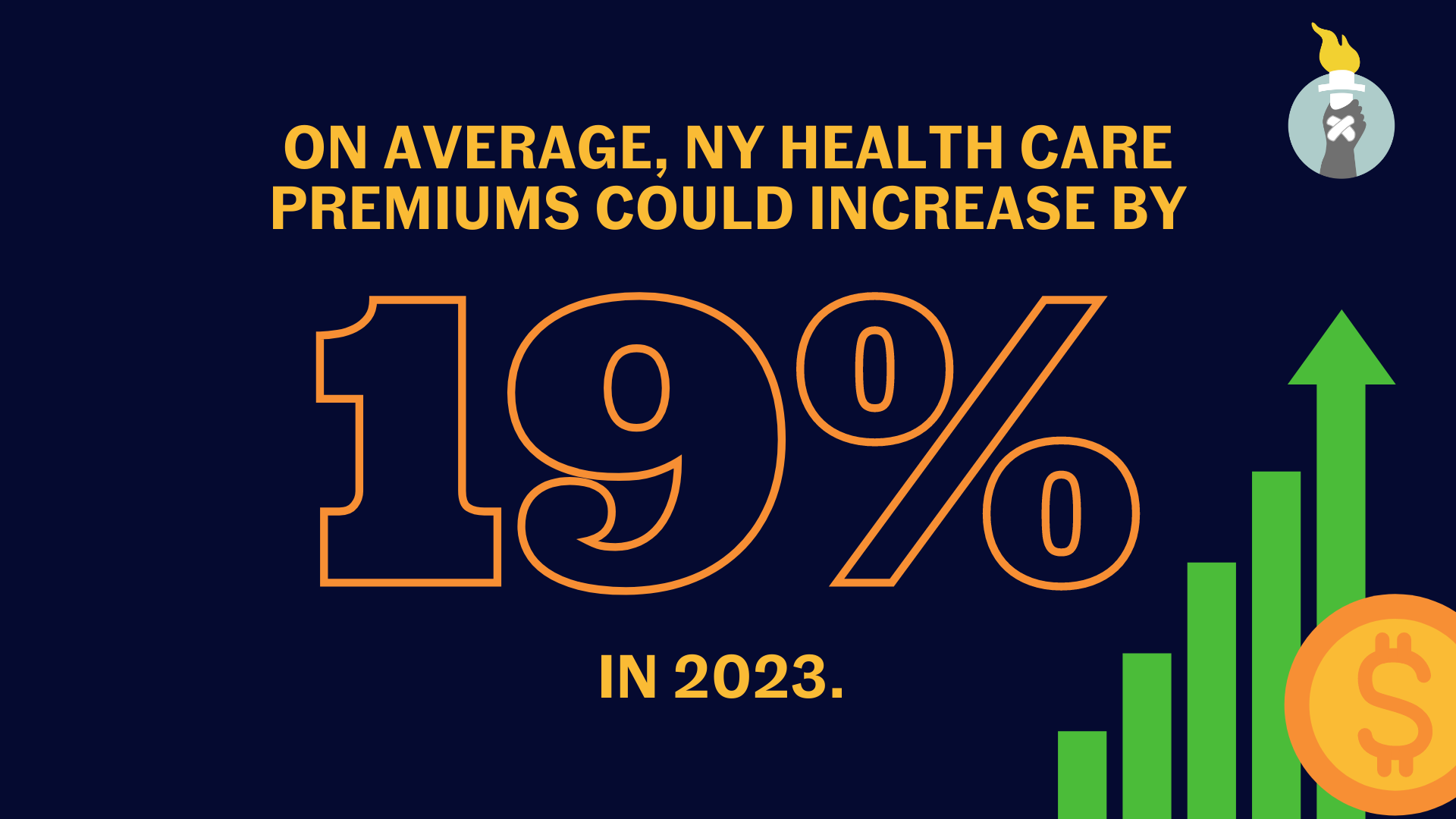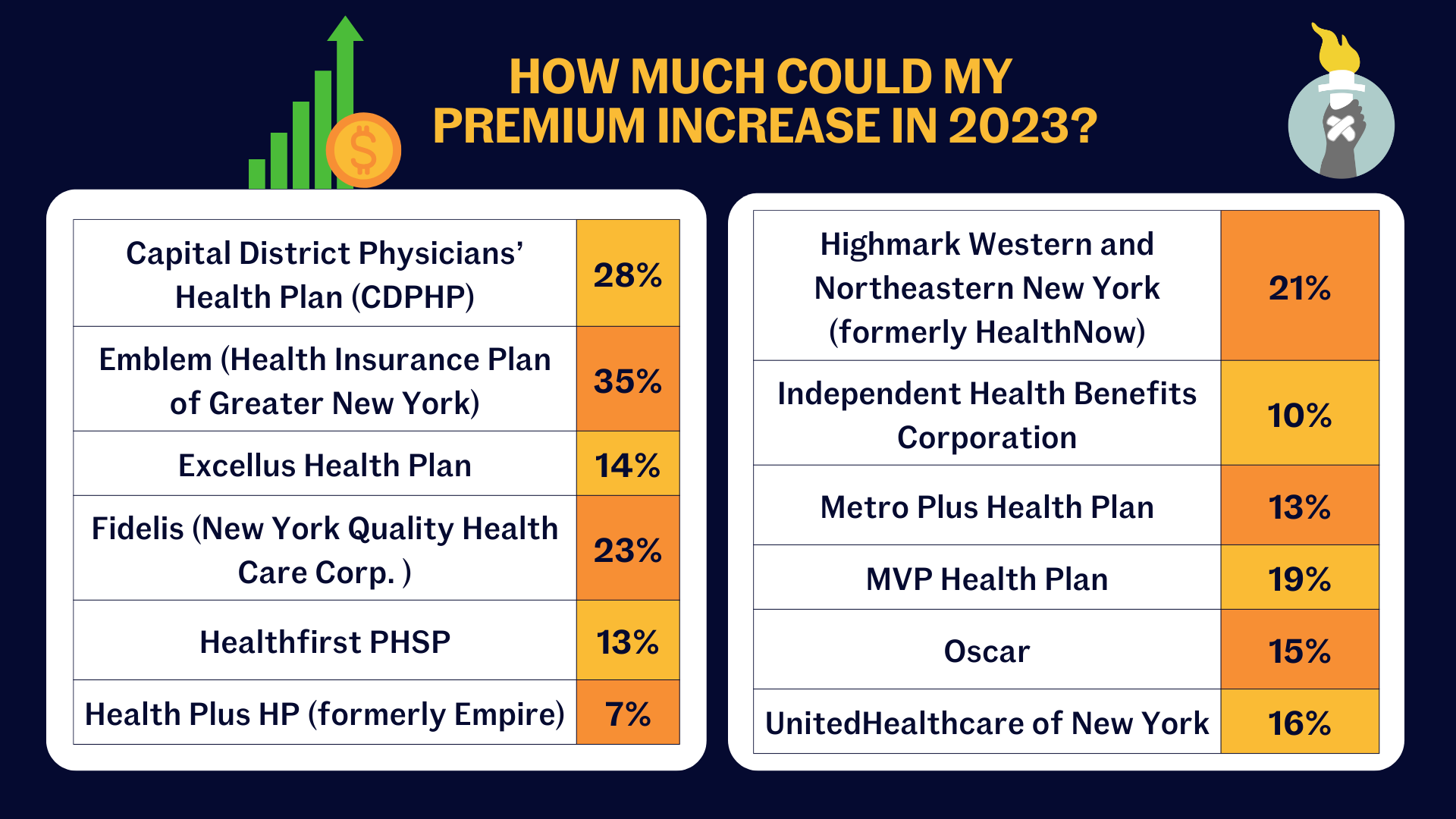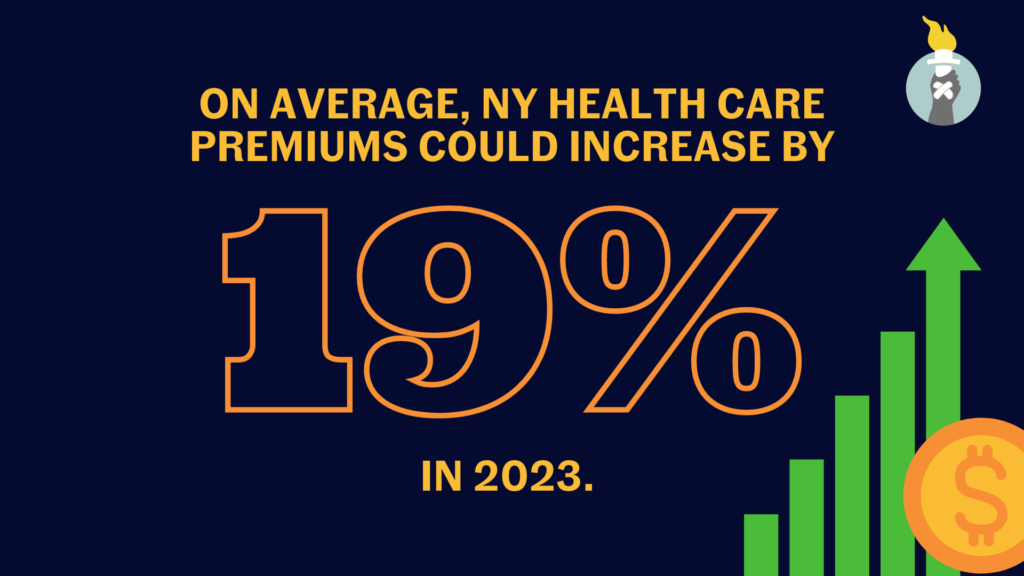Tell New York to Lower Insurance Premiums by July 1
New Yorkers bracing for health insurance premiums in the individual market are in for some unwelcome news as we look ahead to 2024. According to the latest data, individual market rates are set to surge by an average of 12.4 percent next year. Health plans had initially requested a whopping 22.1 percent average rate hike for 2024, but the Department of Financial Services has managed to trim down this figure through New York’s prior approval process.
The table below presents a comparison of the health plans’ original rate hike requests and the rates that were ultimately approved, giving you insight into how the process affects your healthcare costs. (Feel free to refer to our detailed comments on each rate request.)
The prior approval process serves as a critical safeguard; however, the 12.4 percent increase still poses a financial challenge for many New Yorkers. It underscores the need for New York to explore additional measures to protect consumers from steep premium rises outside of the rate review process. States like Connecticut, Delaware, Massachusetts, Nevada, New Jersey, Oregon, Rhode Island, and Washington have already taken steps in this direction, establishing Health Care Cost Containment task forces or agencies.
For those concerned about the affordability of health insurance, there’s some relief to be found. Most New Yorkers purchasing their own health coverage qualify for subsidies that can help offset premium costs. To explore your options and find out more about available subsidies, head over to the NY State of Health enrollment site. If you need assistance with switching plans or enrolling in affordable health insurance, the Navigator program is here to help. Navigators provide free, unbiased enrollment assistance and can help you understand your eligibility for premium assistance and your coverage options. You can reach out Navigators in the CSS Navigator Network at 888-614-5400 or drop them an email at enroll@cssny.org. You can reach out to assistors with the NY State of Health online here or call at 855-355-5777.
| 2024 Individual Market Rate Changes | |||
| Plan | Requested Increase | Approved Increase | Change |
| Emblem/HIP | 52.7% | 25.1% | -52.4% |
| IHBC | 39.2% | 25.3% | -35.5% |
| MetroPlus | 26.4% | 17.6% | -33.3% |
| CDPHP | 23.5% | 12.1% | -48.5% |
| Highmark | 22.6% | 13.0% | -42.5% |
| Healthfirst | 20.9% | 12.5% | -40.2% |
| UnitedHealthcare | 20.9% | 12.2% | -41.6% |
| Anthem (Formerly Empire HealthPlus) | 20.7% | 8.6% | -58.5% |
| Oscar | 18.4% | 7.9% | -57.1% |
| Excellus | 15.2% | 12.2% | -19.7% |
| MVP | 13.3% | 6.5% | -51.1% |
| Overall | 22.1% | 12.4% | -43.9% |
New Yorkers who buy health insurance in the individual market will see premiums go up by an average of 9.7% in 2023. Health plans originally requested an average increase of 18.7%, but this was reduced by almost half through New York’s prior approval process. The table below shows the plan’s requests and the rates that were approved. (You can find our comments on each rate request here.)
Prior approval is an important tool—the reduction will save consumers an estimated $167.1 million. However, for consumers, a 9.7% rate increase is still too high. New York should do more to protect consumers from premium increases outside of the rate review process. For example, Connecticut, Delaware, Massachusetts, Nevada, New Jersey, Oregon, Rhode Island, and Washington State have Health Care Cost Containment task forces or agencies. California created an Office of Health Care Affordability in its most recent state budget.
Are you worried about affording health insurance? Most New Yorkers who buy their own health insurance receive subsidies to help pay their premiums. You can explore your options at the NY State of Health enrollment site. You can also get free help switching plans or enrolling in affordable health insurance through the Navigator program by calling 888-614-5400 or emailing enroll@cssny.org.
| 2023 Individual Market Rate Changes | |||
| Plan | Requested Increase | Approved Increase | Change |
| Emblem/HIP | 34.6% | 9.0% | -11.9% |
| CDPHP | 28.4% | 16.5% | -25.6% |
| NYQHC/Fidelis | 23.2% | 12.4% | -10.8% |
| Highmark | 20.5% | 12.8% | -7.7% |
| MVP | 19.2% | 10.1% | -9.1% |
| Unitedhealthcare | 16.1% | 9.2% | -6.9% |
| Oscar | 14.6% | 6.5% | -8.1% |
| Excellus | 14.0% | 10.0% | -4.0% |
| Healthfirst | 13.0% | 8.3% | -4.7% |
| MetroPlus | 13.0% | 8.1% | -4.9% |
| Independent Health | 10.2% | 6.1% | -4.1% |
| HealthPlus (previously Empire) | 6.9% | 0.5% | -6.4% |
| Overall | 18.7% | 9.7% | -9.0% |
New York’s individual market premiums might increase by an eye-popping average 19 percent in 2023, far surpassing the requests coming in from carriers in other states. Washington and Michigan are proposing increases of just 7%, despite having comparable individual markets.
Rate increases mean New Yorkers would spend a greater share of their budget on health care and less on food, transportation and other necessities – right as New York faces yet another surge in COVID cases and the U.S. teeters on a possible recession. New York insurance carriers have not offered adequate justification to support their big requested price hikes.
In our comments, HCFANY breaks down why DFS should curb rate requests to protect patients from another unaffordable increase in health care costs. Find your carrier in the list below to see what we had to say.
The public comment period is still open! Tell the State how higher health care costs would impact you here.
You can also tell DFS Superintendent Adrienne Harris or Deputy Superintendent John Powell to lower rates by sharing the below on social media and tagging @NYDFS:
New Yorkers pay enough for health care. Tell @NYDFS to stop premiums from getting even higher, especially during a pandemic + possible recession: on.ny.gov/3ag1yEn  [Avg Premium Increase Graphic – Click to Download] |
| On average, NY health premiums could increase by an eye-popping *19%* in 2023. Similar states are proposing increases of just 7%. Would you be paying more for one of these plans next year? Tell @NYDFS: on.ny.gov/3ag1yEn  [All Increases Graphic – Click to Download] |

Despite reporting record profits during the pandemic, all of New York’s 12 individual market insurance companies plan to increase premiums in 2023.
Costs could increase by a whopping 19 percent on average, meaning New Yorkers would spend a greater share of their budget on health care and less on food, transportation and other necessities – right as the U.S. teeters on a possible recession. Exact numbers vary by health plan, with Emblem (Health Insurance Plan of Greater New York) planning the largest increase at 35 percent.
There is still time to tell New York to prevent these unnecessary jumps in health care costs. Tell the State how higher health care costs would impact you by leaving a public comment here by July 1.
